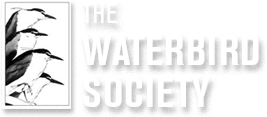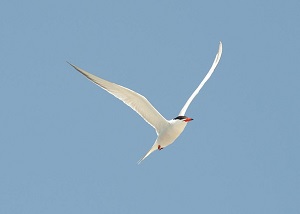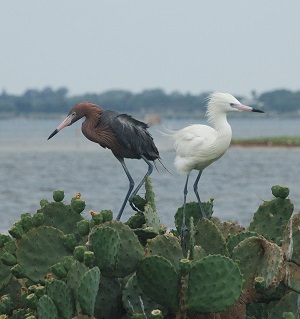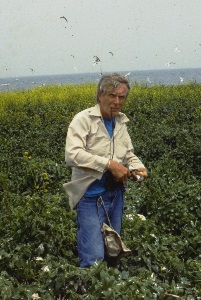By Jack Ahern
Waterbirds know no borders. They will often travel hundreds of miles to the habitats that best serve their needs, where they can exist and thrive. Coincidentally, it is in that same way that the members of The Waterbird Society further the research on these fascinating animals. Members of the international organization work with one another to push forward the knowledge and conservation of the birds that live on or near water. Members of the organization adopt a universal approach to science, to further the field regardless of a scientist’s place of origin. In doing so, they encourage the next generation of waterbird scientists.
 Throughout the years, The Waterbird Society has continually evolved. Beginning in 1976 the society first named itself the “Colonial Waterbird Group.” In 1999, it changed to “The Waterbird Society” to reflect the expanded focus to all aquatic birds. As the name changed, the organization’s focus grew. As influenced by scientific trends of the 1970s, the Waterbird Society members studied the evolution and ecology of water-based birds, and then studies expanded to include behavior ecology. Now the members of the organization primarily study factors that affect the conservation of these birds.
Throughout the years, The Waterbird Society has continually evolved. Beginning in 1976 the society first named itself the “Colonial Waterbird Group.” In 1999, it changed to “The Waterbird Society” to reflect the expanded focus to all aquatic birds. As the name changed, the organization’s focus grew. As influenced by scientific trends of the 1970s, the Waterbird Society members studied the evolution and ecology of water-based birds, and then studies expanded to include behavior ecology. Now the members of the organization primarily study factors that affect the conservation of these birds.
 Presently, draining wetlands, oil spills, contamination of food, the introduction of predators and conflicts within aquaculture all threaten waterbirds. The organization serves as an important place for like-minded scientists from across the world to make conservation plans through scientific discussion. Members include academics in teaching and research, government scientists and members of non-profit organizations that are interested in bird conservation. The Waterbird Society’s main programming offers scientists a means to grow and learn from one another through their journal, annual meetings, and research awards. Erica Nol, current president of The Waterbird Society, credits the generosity of its members in the society’s growth and support of its young members. This generosity comes in many forms: time and effort from editors through its journals, financial assistance with research grants, and the willingness to mentor young scientists at their annual meetings.
Presently, draining wetlands, oil spills, contamination of food, the introduction of predators and conflicts within aquaculture all threaten waterbirds. The organization serves as an important place for like-minded scientists from across the world to make conservation plans through scientific discussion. Members include academics in teaching and research, government scientists and members of non-profit organizations that are interested in bird conservation. The Waterbird Society’s main programming offers scientists a means to grow and learn from one another through their journal, annual meetings, and research awards. Erica Nol, current president of The Waterbird Society, credits the generosity of its members in the society’s growth and support of its young members. This generosity comes in many forms: time and effort from editors through its journals, financial assistance with research grants, and the willingness to mentor young scientists at their annual meetings.
For nearly four decades, the organization has published the results of scientific research in its quarterly journal Waterbirds. The journal accepts submissions on, “the biology, conservation, and techniques of study of the world’s waterbirds, including seabirds, wading birds, shorebirds, and waterfowl.” Waterbirds is a leading journal within the field of this scientific community. It has a high impact factor for a peer-reviewed journal, a professional editor and international panel of volunteer associate editors. The impact of the journal goes a long way to providing support for the organization’s young scientists early on in their career. Through publication in a well-respected journal, young scientists can bolster their professional and academic resumes.
The organization awards three major grants. The Kushlan Research Grant, endowed from Dr. Jim Kushlan in 2000, an early member of the Society, funds research to encourage scientific advances in the understanding of wading birds such as herons, egrets and storks. Another similar generous donation endowed by Ian and Shirley Nisbet, is offered to anyone conducting research on terns or gulls. A general grant funded by donations from members and the society’s operating funds begins this year with the intention of funding research for conservation related studies, as well as studies not addressed by the other two awards.
This desire to support the field and the next generation is also prevalent in The Waterbird Society annual meeting and research awards. As the organization hopes to live up to its international mission, they hold many meetings outside of North America, most recently at the University of Iceland in Reykjavik. Nol says that she often comes away from the meetings inspired, “I feel these meetings encourage people to do better science.” The smaller and more focused gatherings allow scientists to connect and to help one another. These meetings illustrate further assistance for young scientists. The organization also offers travel grants for the PhD, Masters, and Undergraduate students that hope to attend their conferences. Generally, all students who apply receive a modest travel stipend, between $200 and $500, to help defer travel costs to the annual meeting.
 Nol admits that these meetings can be intimidating for student members, “Seeing young scientists and teaching them how to network in this field is a major function of our meetings as it can be hard for people to feel comfortable talking with more established waterbird biologists. Young scientists need all the encouragement they can get.” The smallish meetings concentrate subject areas and offer more opportunities for students to approach professionals and to receive better feedback on their work. Senior members of the organization go out of their way to connect with students and young academics, to provide advice on how to navigate the daunting field of academia.
Nol admits that these meetings can be intimidating for student members, “Seeing young scientists and teaching them how to network in this field is a major function of our meetings as it can be hard for people to feel comfortable talking with more established waterbird biologists. Young scientists need all the encouragement they can get.” The smallish meetings concentrate subject areas and offer more opportunities for students to approach professionals and to receive better feedback on their work. Senior members of the organization go out of their way to connect with students and young academics, to provide advice on how to navigate the daunting field of academia.
To use an age old (and perhaps cliché) aphorism, birds of a feather flock together. The comradery felt through scientists and the desire to support the next generation is what keeps The Waterbird Society propelling forward. Through the organization’s journal, research grants, and international annual meetings they advance their field and provide mentorship and experience for young scientists. To Nol it’s a vital effort, “supporting students is supporting the future of the Society.”
Erica Nol is a professor of Biology at Trent University in Peterborough, Ontario, Canada. She has been teaching undergraduate courses in Ecology, Ornithology and Biostatistics for over 30 years and has supervised over 50 graduate students in projects ranging from the conservation of grassland birds to the effects of climate change on arctic breeding shorebirds. She previously served as the President of the Society of Canadian Ornithologists, and now serves as the President of The Waterbird Society.
Jack Ahern is a Masters of Public Administration student focusing on nonprofit management at NC State University.






